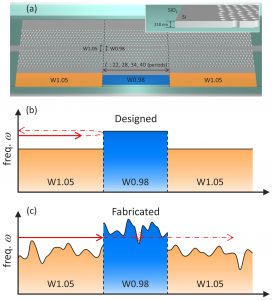APS March Meeting 2016 Ryo Suzuki
Research
APS MARCH MEETING 2016 Report
Period: March 14, 2016 - March 18, 2016
Location: Baltimore Convention Center, Baltimore, MD, USA
Objective: To present results, attend presentations, and visit the National Institute of Standards and Technology (NIST)
About the Conference
Baltimore, where the conference was held, is located about one hour from Washington, D.C., and a walk along the coast, called the Inner Harbor, was very pleasant. The APS March meeting was a very large conference, equivalent to a physics conference in Japan. Since there were few presentations on light-related research, Tanabe Laboratory may consider submitting a paper if it focuses on cavity optomechanics.
On the first morning of the conference, I gave an oral presentation in the Nanomanufacturing and Optical/Laser/High Frequency Devices session. The session was a collection of research related to optics, and I was the only one who made a presentation on optical combs. I should have checked the contents of the presentations before and after my presentation to make it easier for those who are not familiar with optical com. The Q&A session was not a problem because the questions were very simple.
2. Contents of the presentation you attended
[A51.00004] Monolayer Tungsten Disulfide Laser
In the study of graphene, it is known that new physical properties can be obtained by monolayering the number of layers in layered materials. This is similarly applicable to transition metal dichalcogenides (MoS2, WS2, etc.), where monolayering changes the gap from an indirect gap to a direct gap. In photonic crystals and distributed Bragg reflection micro-optical resonators with added monolayer transition metal dichalcogenides, enhancement of spontaneous emission has been reported, but coherent optical emission has not been reported. In this presentation, we present single-layer WS2 as a WG disk
The report was on the realization of a two-dimensional exciton laser at visible wavelengths by embedding the laser in a type 2 resonator.
[F48.00013] Controllable frequency comb generation in a tunable superconducting coplanar waveguide resonator
Optical carcoms are generated via four-light wave mixing by inputting infrared pump light into a resonator, and the idea was developed in this study using a superconducting resonator in the microwave region. The resonator is fabricated using neodymium material with a thickness of 50 nm and is generated from a microwave generator. In particular, it is possible to control the frequency interval from 5 Hz to 5 MHz and the center frequency, and its bandwidth is about 100 MHz (20 comb lines). The University of Tokyo and RIKEN were among the collaborators.
[A51.00012] High efficiency on-chip three wave parametric frequency conversion and its applications in both classical and quantum optics
Micro optical resonators fabricated on substrates are considered useful for generating χ (2) nonlinear effects, but coherent photon-photon interaction (frequency conversion of three light waves) using integrated devices has not yet been reported. In general, it is considered difficult to realize a device that combines high nonlinearity with a high degree of freedom in design, but we have solved this problem by fabricating a low-loss, high nonlinearity, micro-sized resonator by using aluminum nitride in this research. The design, which is suitable for both telecommunication and visible light bands, achieves high χ (2) nonlinearity with efficiencies of 3 MHz/mW for degenerate conversion and 5.8 MHz/mW for non-degenerate conversion.
Visit to National Institute of Standards and Technology (NIST)
Dr. Marcelo Davanço kindly allowed us to visit NIST (National Institute of Efficiency Standards) near Washington DC. The institute conducts research on resonator optomechanics and quantum optics, mainly using silicon and silicon nitride waveguides and resonators. Since this was my first visit to a research institute (other than a university), I cannot compare it with other places, but the layout of equipment and the design of experimental systems were well thought out, and the space seemed to be used efficiently. In recent years, they seem to be presenting interesting research such as optical mode mapping of micro optical resonators and Bragg reflection four-wave mixing. ( http://www.nist.gov/cnst/davanco.cfm )

- Categories
- 国際会議報告



